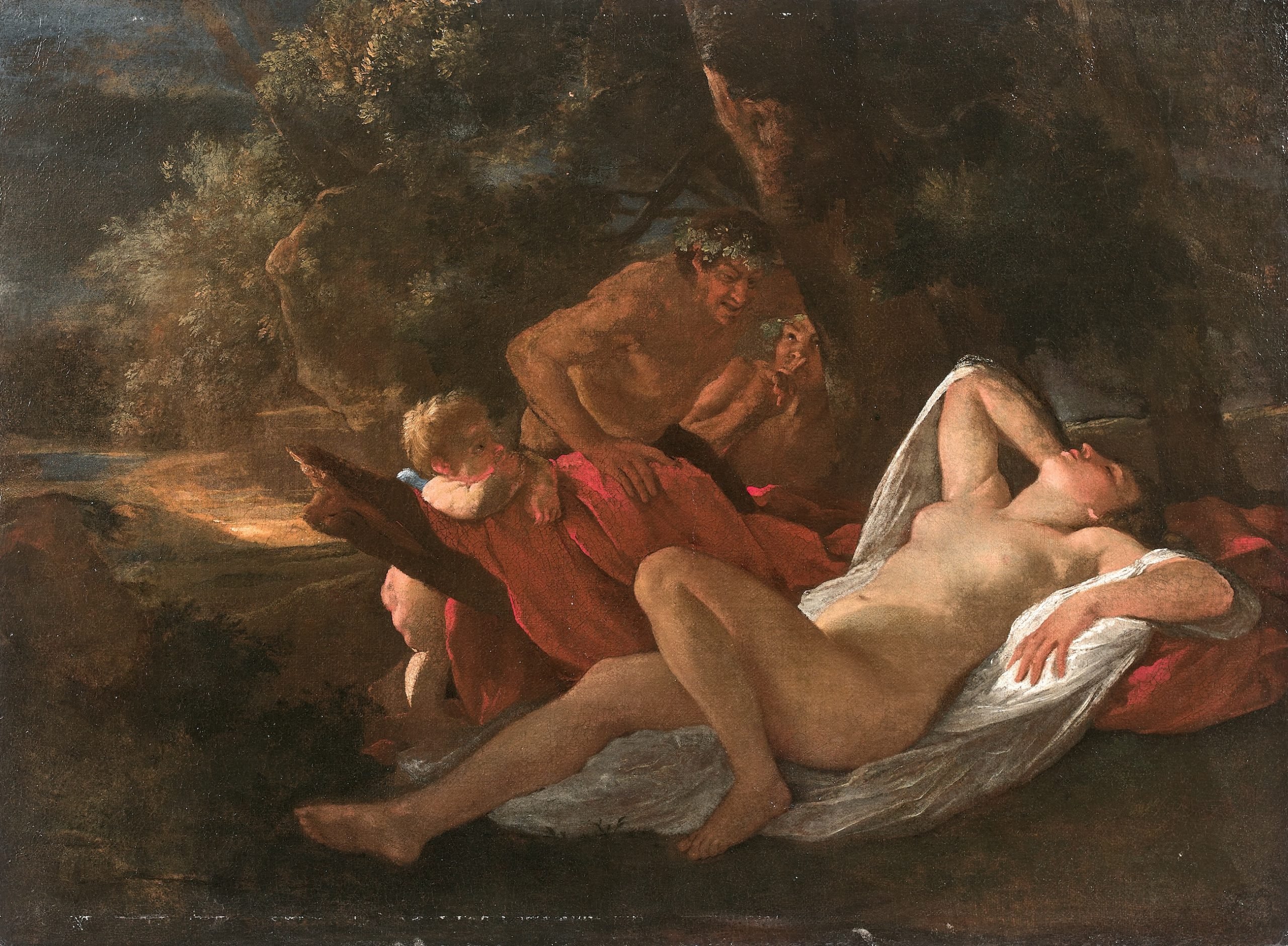
French painter Nicolas Poussin is best known as a painter of classical subjects in classical styles, but an uncommonly racy early work, Vénus Épiée par Deux Satyres (Venus Spied Upon by Two Satyrs) (1625–27), is coming to auction, courtesy of French auction house Ader.
Estimated at up to €1 million ($1.2 million) and off the market since 1950, the painting goes to the block November 26 with the assistance of art historian-detective Eric Turquin. The sale will take place at Paris’s Hôtel Drouot.
“One simply doesn’t find paintings by Poussin from this period, with this theme and of these dimensions on the market,” said Ader auctioneer David Nordmann.
The painting, measuring just over three feet-wide, dates to shortly after his 1624 arrival in Rome at the age of 30, before he reached artistic maturity. The subject of a nymph asleep in the woods and surprised by satyrs was frequently painted at that time in Venice, where he traveled on his way to Rome. He would later leave erotic subject matter like this behind in favor of classical subjects, and this atypical subject matter was part of the doubt over the work’s attribution, said Turquin: “We couldn’t imagine that Poussin would have painted a subject like this in 1626.”
The work was first published as a Poussin by historian Tancred Borenius in 1933. Anthony Blunt rejected it in the 1960s, but Jacques Thuillier later granted it tentative status. Nicolas Milovanovic and Mickaël Szanto argued for it as a genuine Poussin in a 2017 article, at which time it was restored, which encouraged its attribution to Poussin, according to the house.
Attesting to experts’ belief in its authenticity, the painting was featured at the Musée des Beaux-Arts, Lyon, in the 2023 exhibition “Poussin and Love,” among works by the master on the same subject from the Kunsthaus Zurich and the National Gallery in London.
It has now received the ultimate blessing: it will be included in Pierre Rosenberg’s forthcoming catalogue raisonné, a comprehensive catalogue of an artist’s work.
The painting’s early provenance is slightly sketchy. The house suggested that it may have been in the collection of artist Antoine Benoist, then in that of the first Duke of Walpole, before possibly coming to auction at an 1839 sale at Christie’s London. The house then places it in the holdings of Leonard Holmes, Baron of Heytesbury; then in the hands of Louvre Museum curator Paul Jamot, who sold it in 1943 at Hôtel Drouot. It came to auction at the same house seven years later, and has been in private hands ever since.